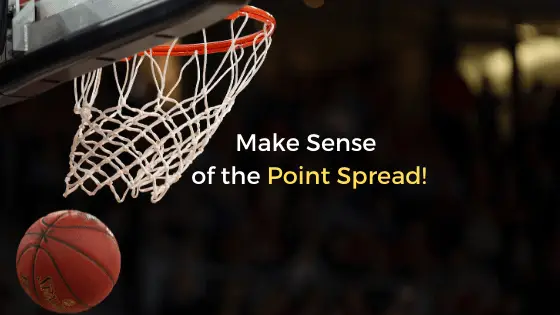It seems like anytime you sit on the couch to watch a game you get inundated with talk of the spread. Who’s getting points and who’s laying points. Why some teams are plus points and others are minus points. It can all get a little confusing.
Well it doesn’t have to be. In the next five minutes you will learn all you need to know to be talking the spread with the best of them. Heck, you may even be betting the spread!
What is the Spread?
In order to know what it means to cover the spread, you first need to know what the spread is. The spread, short for ‘point spread’, is a betting market that places a handicap on the favorite in a sporting contest while at the same time granting a points ‘start’ to the underdog.
An example from the NBA may look like this:
| Team | Handicap | Odds |
| Milwaukee Bucks | -4.5 points | -110 |
| Toronto Raptors | +4.5 points | -110 |
In this case the Milwaukee Bucks are favored by 4.5 points. This means they need to win the game by 5 or more points to overcome the handicap, hence it is written -4.5. The Raptors are the underdog and are getting a +4.5 points. In order for a bet on them to win the Raptors need to either win outright or lose by 4 or less points.
The handicap evens the contest in such a way that bookmakers can now offer identical (or close to identical) odds on each team. Typically this is around the -110 mark.
Bettors love this market because it provides two genuine chances in the contest and the ability to return virtually the same amount wagered, as clear profit.
What is Covering the Spread?
Covering the spread is simply sports betting speak for the team that wins once the point spread handicap has been applied. In the above example if the Bucks were to win the game 124 – 117 then they have ‘covered the spread’. This is because they won the game by 7 points, beating the -4.5 handicap by 2.5 points.
Likewise, if the Raptors had hit a junktime three on the buzzer and the scoreline was instead 124-120 they would have covered the spread. This is because the losing margin is now 4 points meaning the +4.5 handicap is applied to their score giving an effective scoreline of 124 – 124.5. A narrow victory but enough to cash the bet!
What Does ‘Against The Spread’ (ATS) Mean?
Sometimes sports betting analysts will quote a team record ‘against the spread’ or ‘ATS’. Instead of comparing teams with their actual win loss record they find value in comparing how teams have performed against the bookmaker’s applied point spread handicap.
For example a team may be ‘22-16-1 ATS’. This means they have covered the spread 22 times, failed to cover it 16 times and on one occasion the result was a push (tie). This can only occur if not half point is used in the quoted handicap.
The ATS metric is used to measure if a team has outperformed expectations. If a team performs well against the spread consistently then it makes sense to think that they are performing better than books thought they would.
Teams with a great ATS record quickly become darlings of the public. They are seen as money making machines and hence the media is quick to publicise the ATS record as a solid predictor of future performance. Of course this thinking is flawed.
The reason that bettors think an ATS record is a useful metric is the very same reason that it isn’t. Sportsbooks are agile and make adjustments, often much quicker than the regular bettor. Armed with the most up to date information sportsbooks will adjust spread lines to reflect previous good performances meaning they are now ‘priced in’!
What Does it Mean To Bet the Spread?
Betting the spread simply means you are wagering on the point spread market. It means you are accepting where the spread line is and betting on either the plus or minus points team.
Of course be wary of this.
The spread is a coin flip or 50/50 market and therefore you would expect to win in profit the same amount you wagered. For example in a coin flip market where there was no juice if you wagered $20 you would expect to win $20 for an overall return of $40.
The reality is sportsbooks need to make money (hopefully not yours!) and as a result they do take a small margin. In the case of -110 you effectively win 10/11ths of your original stake. This means you need to win at 52.38% to break even. That is more difficult than it seems!
Is it Better to Bet the Spread or the Moneyline?
What a great question! There is no correct answer for this one. They are two entirely different markets even when being bet on the same game. The main difference to the point spread is that the moneyline is all about picking the outright winner without any handicap!
It is the most simple betting market available. Of course when you look to bet the moneyline
some teams will be heavily favored over others. Think about college football for a minute. Often there are enormous mismatches. If you were to bet the moneyline favorite on those games you would receive literally cents in the dollar profit. Not a great return!
Betting the moneyline is its own beast. We have a simple to use guide to become a moneyline betting genius right here at school of bets!
The Game Starts Now!
Betting the point spread is easier than it seems. The jargon thrown around by sports bettors only serves to make something which is inherently easy to understand seem much more difficult.Like all things in life, you will gain a better understanding of how to bet the point spread by being invested. Start small, track your progress, reflect and refine.
Good luck and as always, gamble responsibly!



